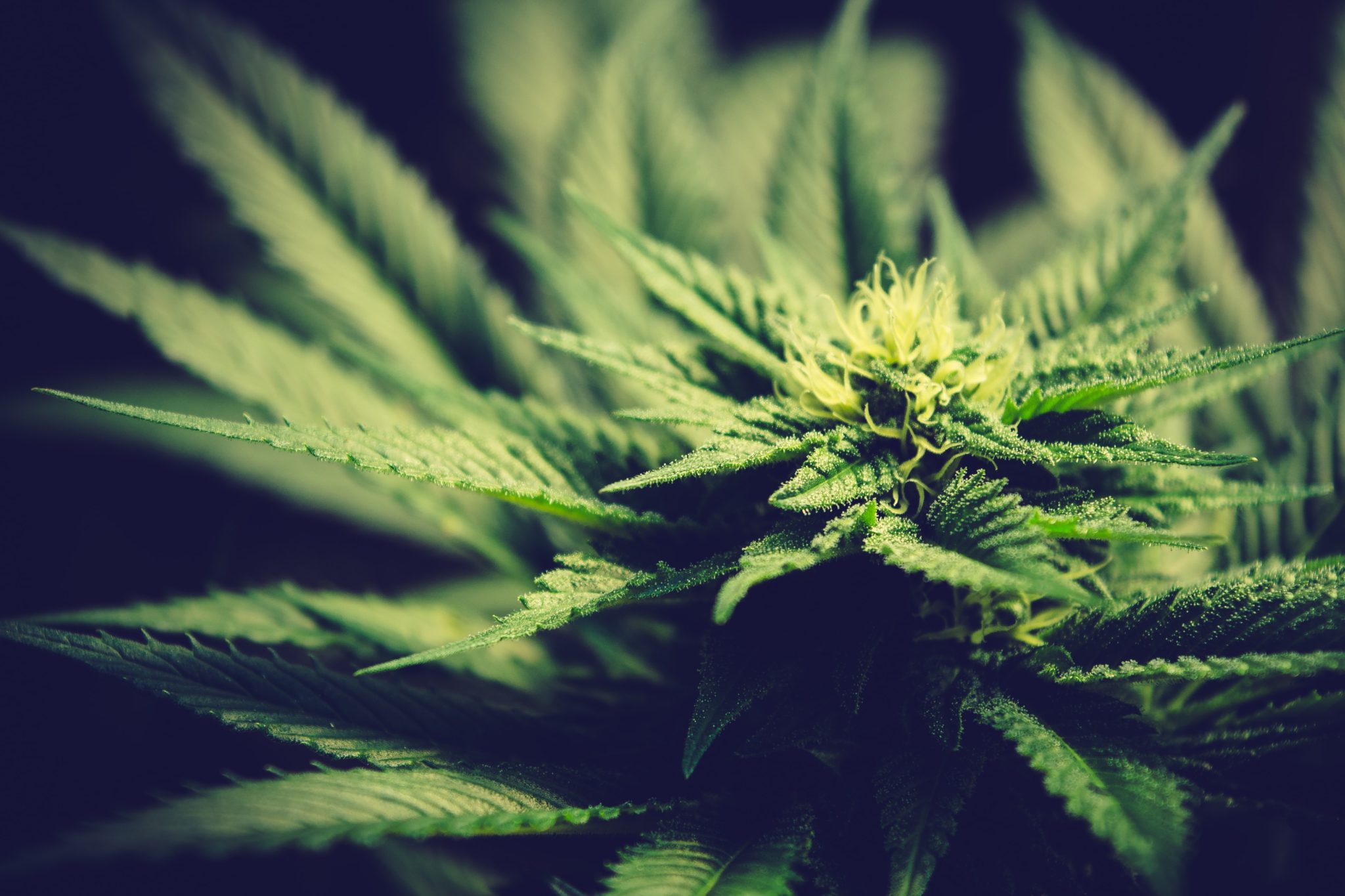Has it ever happened to you that you go back to revisit a strain, only to find it tastes and feels completely different? If you found yourself wondering why that is, the secret lies within the compounds that give the strains their unique scents, flavors, and effects.
And, no, it’s not cannabinoids.
It’s terpenes.
Terpenes are the most salient aspect of the cannabis experience. Most of the credit for the effects of different strains are attributed to the cannabinoids. However, the truth is that the experience you get from cannabis comes from the terpenes. It’s the potency of the strain and intensity of the effects that comes from the cannabinoids. Raciness, euphoria, sleepiness, and all the other effects from the terpenes.
Let’s take a close look at what terpenes are and how to maximize terpene production in your plants.
What Are Terpenes?
Terpenes are volatile plant alcohols produced inside the trichomes. These are secondary chemical compounds produced by cannabis — and nearly all other plants in the world! A secondary compound is one produced by a plant as a by-product in support of the production of its primary compounds. This could be fruit, flowers, or in the case of cannabis, could be cannabinoids.
Terpenes support the healthy growth of the plant in several ways. They have a multitude of different effects on external and internal stimuli that affect the plant, such as fungus and cellular growth irregularities. They are also responsible for the distinctive smell that different plants – including cannabis – hold, and do impact their flavor to some degree as well. These terpenes smell and taste the way they do in order to repel pests and attract pollinators and other animals that help spread the plant’s pollen. Doing so ensures reproduction and successful continuation of the species.
In addition to being vital to the plant, they are also important to cannabis consumers as well. Terpenes are what determine the type of experience a particular strain will impart. Many strains are high in THC, but the terpenes levels tend to differ. Even lower THC strains with a high amount of terpenes will likely provide a more enjoyable experience than a THC-rich strain with a low amount of terpenes.
There are more than 120 terpene compounds present in the cannabis plant, but some are more common than others. If you want a specific type of experience – euphoric, calming, arousing, etc. – then you want to grow a strain with a terpene profile that would provide those effects.
For instance, some of the most common terpenes and their effects include:
- Myrcene – Myrcene is the most common cannabis terpene and is known for its sedative effects. Many researchers believe its the concentration of this terpene that determines whether a strain will have more sleepy indica or energetic sativa effects. The boiling point is 167℃ for this terpene.
- Limonene – This terpene is also abundant in citrus, and gives strains a distinct citrusy scent. Limonene is a high-energy terpene that is known for combating depression. Boiling point is 176℃.
- Terpinolene – This terpene carries a woody, smokey aroma. It has sedating effects, in addition to antioxidant, anti-tumor, and anti-bacterial properties. Boiling point is 186℃.
- Alpha-Pinene – Most commonly found in pine trees, this gives strains a coniferous scent. This is a very uplifting and energetic terpene. Boiling point is 156℃.
- Beta-Caryophyllene – This terpene has a woody and black pepper scent to it. It’s anti-inflammatory and alleviates gastrointestinal distress. Boiling point is 130℃.
- Humulene – Humulene is a hoppy terpene present in beer. It’s anti-inflammatory and can also suppress hunger. Boils at 106℃.
- Linalool – Commonly found in lavender, this terpene is sedating and strains with Linalool are often used to treat symptoms of anxiety. Boils at 198℃.
- Delta-3-Carene – Often found in rosemary and bell peppers, this terpene is anti-inflammatory and is also effective at treating arthritis and helping with recovery of broken bones. Boils at 170℃.
- Eucalyptol – Often found in the eucalyptus tree, but is also in other plants. Eucalyptol is often used to treat pain, depression, and metastasis of cancer. Boils at 172℃.
- Terpineol – This terpene smells like lilacs and is often used in perfumery. It is anti-inflammatory, anti-depressant, and antifungal. Boils at 219℃.
These are just a handful of the 120+ identified cannabis terpenes. As you can see, each of these terpenes contributes different effects to the strains in which they are present. If you’re looking for a specific type of experience, it’s important to look at the terpene profile and not just the cannabinoid content.
Maximizing Terpene Production in Cannabis Plants
Knowing that you want a high terpene profile in your strains, you may be wondering how to maximize the terpene production in your cannabis plants.
When it comes to cultivation and terpenes, genetics are key. Genetics are what determine the types of terpenes are capable of being produced in the strains you are growing.
Aside from genetics, there are a few other things you can do to get the most terpenes from your strains. First, start by ensuring optimal plant health throughout all stages of the life cycle. Some tips for maintaining your plant health include:
- Adding the nutrients at the correct time
- Achieving and maintaining the right pH
- Correct temperature and humidity settings
- Proper lighting
- High water quality
- Having a carbon dioxide drip
Next, maximizing the terpene production in your plants requires robust microbiology in the soil. In their natural environments, cannabis plants are parts of a rich ecosystem that is composed of numerous and diverse microorganisms within the osil. Some of these microbes, such as certain types of fungi and bacteria, play vital roles in the performance of the plant by improving mineral nutrition.
Cultivation methods and various microbiotic factors are important considerations for cannabinoid biosynthesis. Variation in secondary metabolites, such as terpenes, is heavily influenced by abiotic factors — light, temperature, humidity, watering frequency, and nutrients.
Bacteria and fungi are the two most important microbiota groups that interact with plants in a beneficial manner. The microbiology of the soil stimulates the cannabis plant’s immune system, thereby creating more terpenes.
Finally, another method of maximizing terpene production in your plants is to carefully control the humidity levels to push the production of terpenes. Keep the climate a little more humid and cool than you normally would. Be sure to have optimal air flow going at all times, however. If a grow space is kept humid and cool without ventilation, there is the risk of mold and mildew growing on the plants. On the other hand, heat and dryness destroy terpenes. If you are after more terpene content in your flowers, avoid high temperatures in the bloom phase (80+ F) and ramp up the humidity some. Do beware of mold and mildew risk any time your room is above 60% RH! Again, airflow within the grow space is also crucial.
Terpene Extraction and the Sale of Isolated Terpenes
Terpenes are highly volatile and delicate, requiring extreme care to ensure the preservation of their aromas and flavors. High temperatures and high pressure, either simultaneously or separate, can result in the breakdown of the structure of the terpenes.
There are three basic methods of terpene extraction: Solventless, solvent-based, and mechanical.
Solventless terpene extraction
Solventless terpene extraction uses either steam distillation or hydrodistillation, the same procedures that have already been in use by the perfume industry for centuries. The former involves placing the cannabis plant material over a vat of boiling water. The latter is similar, though the plant material is directly submerged into the boiling water. As the steam passes through the plant material, the lighter-weight oils containing the terpenes are transported to a condensation flask, wherein the oils and water cool down and liquify.
Solvent-based terpene extraction
Solvent-based methods tend to be more effective. They are done at lower boiling points and with the use of hydrocarbons and gases such as butane, CO2, ethanol, or nitrogen. These methods involve using vacuums to reduce the initial heat, thereby keeping the temperature adequately low enough to prevent the breakdown of the bioactive compounds.
The most commonly used technique is CO2 extraction. This method uses heat and pressure to turn CO2 from a gaseous state into a supercritical fluid that is then flushed through the cannabis plant material. This produces a resin concentrate that will then require refining via a vacuum drying oven. In there, the concentrated terpenes will be isolated and able to be extracted separately. This method ensures the final product is pure, meaning there are no remnants of solvent or water. This method is also safer, as CO2 is non-flammable.
Mechanical terpene extraction
The final method of terpene extraction is also a solventless method, only relying on the evolution of ancient techniques that use old school pressure and heat. The same mechanical presses that are used to make rosin can also be used to separate out the terpene liquid in the buds. However, the problem with this method is that the terpenes will not be completely isolated, meaning they still contain cannabinoids.
Purchasing Isolated Terpenes
You can purchase isolated cannabis terpenes to enhance your products and experience. Terpenes for cannabis products are either cannabis-derived or botanical-derived, meaning they have either been extracted directly from a cannabis plant or extracted from a non-cannabis plant.
It’s important to know the difference between the two, especially as the formulations derived from cannabis are subject to state cannabis regulations while botanical-derived terpenes are not.
The origin of the terpenes also directly affects the purity, effectiveness, and consistency of the product. Each batch of terpenes derived from cannabis will vary just slightly according to the specific plant that was used; these are natural variations, even sometimes occurring within the same strain and same grow space.
The batches derived from non-cannabis plants can actually avoid having these variations by sourcing the individual terpenes from multiple sources and then blending them together to create a standardized formula. This will ensure consistency between batches.
When buying isolated cannabis terpenes, remember that regardless of the plant of origin, terpenes for cannabis applications should be food grade. This means they should be completely safe for human consumption and should be suitable to directly make contact with other foods.
A few other things to look for when considering a cannabis terpene supplier:
- Documentation providing proof the products are food grade should be readily available.
- The supplier should provide a full list of the ingredients, as well as certificates of authentication, certificates of analysis, certificates of origin, safety data sheets, and technical data sheets.
- The supplier should be able to confirm that the terpenes you are buying are all-natural and completely solvent-free.
The Power of Terpenes
Cannabis terpenes are the volatile compounds responsible for the way a strain smells, tastes, and affects an individual. Terpenes are abundant in cannabis, in addition to a multitude of other plants, fruits, and herbs.
Terpenes play a vital role in the health and survival of the plants in which they are present, as they both repel pests and predators and attract pollinators.
There are several ways to maximize the terpene production in your plants, though you can also purchase isolated cannabis terpenes from a reputable supplier. Just be sure to do your research on the manufacturer proper to buying!
This was a Booklexia and GrowCast collaboration. For more powerful and educational cannabis material, stay tuned to GrowCast and visit Booklexia Content Marketing HQ

